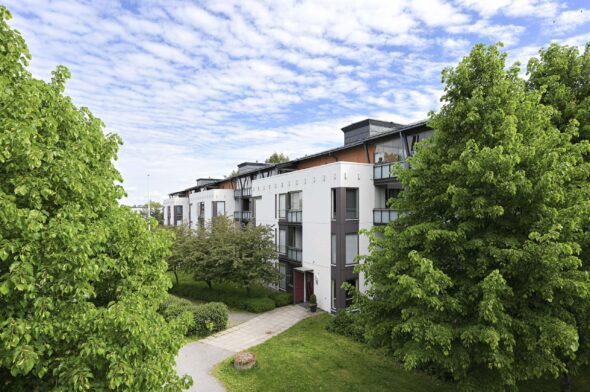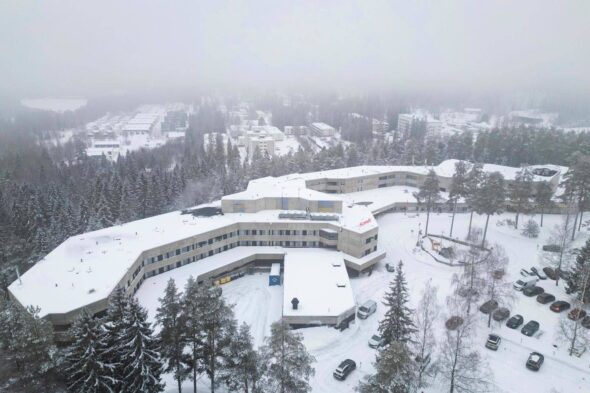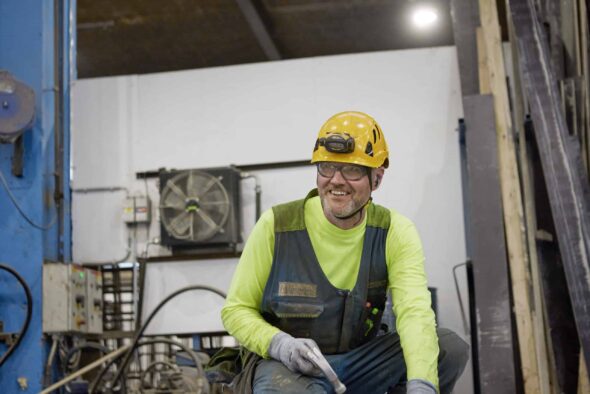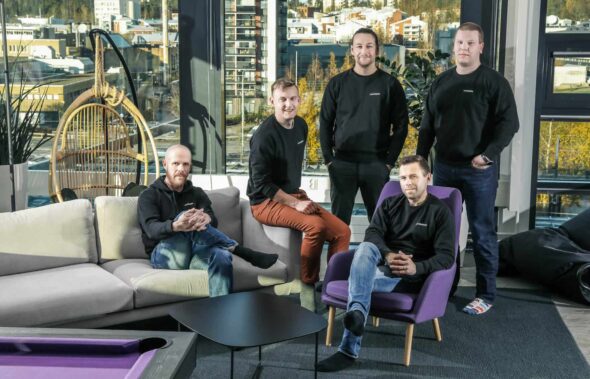When the cooperation with LeaseGreen was launched, LähiTapiola’s goal was to develop energy efficiency in a profitable way. LeaseGreen carried out energy renovations for LähiTapiola at five large properties in the Helsinki metropolitan area, resulting in energy efficiency improvements of more than 20% more than estimated at the start of the project. The calculated profitability of the energy renovations was already at a good level at the outset, but turned out to be more profitable than expected.
“The results of the energy renovations show that LeaseGreen’s estimates of the profitability of the effects of energy efficiency measures can be considered reliable,” says Eero Kokkonen, Environmental Manager of LähiTapiola Real Estate Finance.
“They have not succumbed to unrealistic sales pitches and have also been successful in project delivery. Their long-term commitment is reflected in the attitude with which they work. We have carried things through to the finish line in a good spirit. The cooperation has gone very well.”
The energy renovations carried out by LeaseGreen in 2017-19 have modernised the ventilation, lighting and automation of the buildings. Mikonkatu 13, a landmark property in the heart of Helsinki, has achieved savings of 20% in energy costs and an 18% reduction in CO2 emissions through these measures. A large photovoltaic power plant was built on the roof of the logistics building in Vantaa, and the energy it generates is used, for example, to ripen bananas.
Over the past year, the energy bill for the five properties has fallen to €133 000 below the baseline. The higher-than-projected financial savings have also had a positive impact on the value of the properties. According to Mr Kokkonen, the modernisation of technology has also improved conditions.
“We can control building services more precisely and get better quality information about the conditions in the premises. The analytics developed by LeaseGreen have enabled us to access the findings of the technology more quickly. From the big data, we have also picked up small findings that may be symptomatic of larger problems. The aim is to reduce the potential cost of a single detection.”
Climate efficiency takes over from energy efficiency
During the two-year warranty period following the completion of the energy renovation, LeaseGreen has used data analytics to make many small changes that have improved both conditions and energy efficiency. The energy renovations at five sites have cut the annual carbon footprint by 320 tonnes, equivalent to the production of more than 2,500 photovoltaic panels.
Energy costs typically account for 30-40% of the maintenance costs of Finnish office buildings. Energy economics therefore play a key role in real estate investors’ decision-making. Eero Kokkonen says that emissions have also grown rapidly in importance:
“Climate efficiency has risen alongside energy efficiency. The new real estate projects being launched in Finland are more ambitious in this respect than those launched just a few years ago. We are constantly exploring new solutions to reduce emissions and costs in buildings.”
“The biggest challenge and opportunity is related to district heating, to which property owners are still tied, especially in the centres of large cities. Finland should move away from combustion-based energy production as quickly as possible.”
Real estate investors are interested in switching from district heating to geothermal heat
Emissions from district heating have fallen significantly during the 2000s. One of the main reasons for this change has been the use of wood-based biofuels. Some property owners are reluctant to use bioenergy because the criteria for its sustainability may change in the future.
“Switching from district heating to geothermal is of great interest to real estate professionals, both because of the emissions and the costs,” says Thomas Luther, CEO of LeaseGreen.
“However, there are areas in the heart of cities where a change of heating method cannot be implemented with current technology, primarily due to underground constraints. There, centralised district heating remains the best solution for property owners. We therefore hope that heating companies will succeed in rapidly reducing district heating emissions while keeping prices under control.”
According to Luther, the greatest potential in such areas is typically found in the development of ventilation and intelligence in buildings. The aim is to optimise the energy economy of the building and the conditions experienced by the occupants. It pays off every day of the year:
“The best results are achieved when we bring the information generated by building services into virtual digital twin machines and actuators. These can be used to model and monitor changes in the system. Artificial intelligence provides useful information to knowledgeable people who process the big data into concrete suggestions for the development and daily use of the building. Experience has shown that knowledge trumps hunches in this business, too.”
Further information
Environmental Manager Eero Kokkonen
LähiTapiola Real Estate Management
+358 50 525 9682
eero.kokkonen@lahitapiola.fi
Thomas Luther, CEO
LeaseGreen Group
+358 40 534 4256
thomas.luther@leasegreen.com












